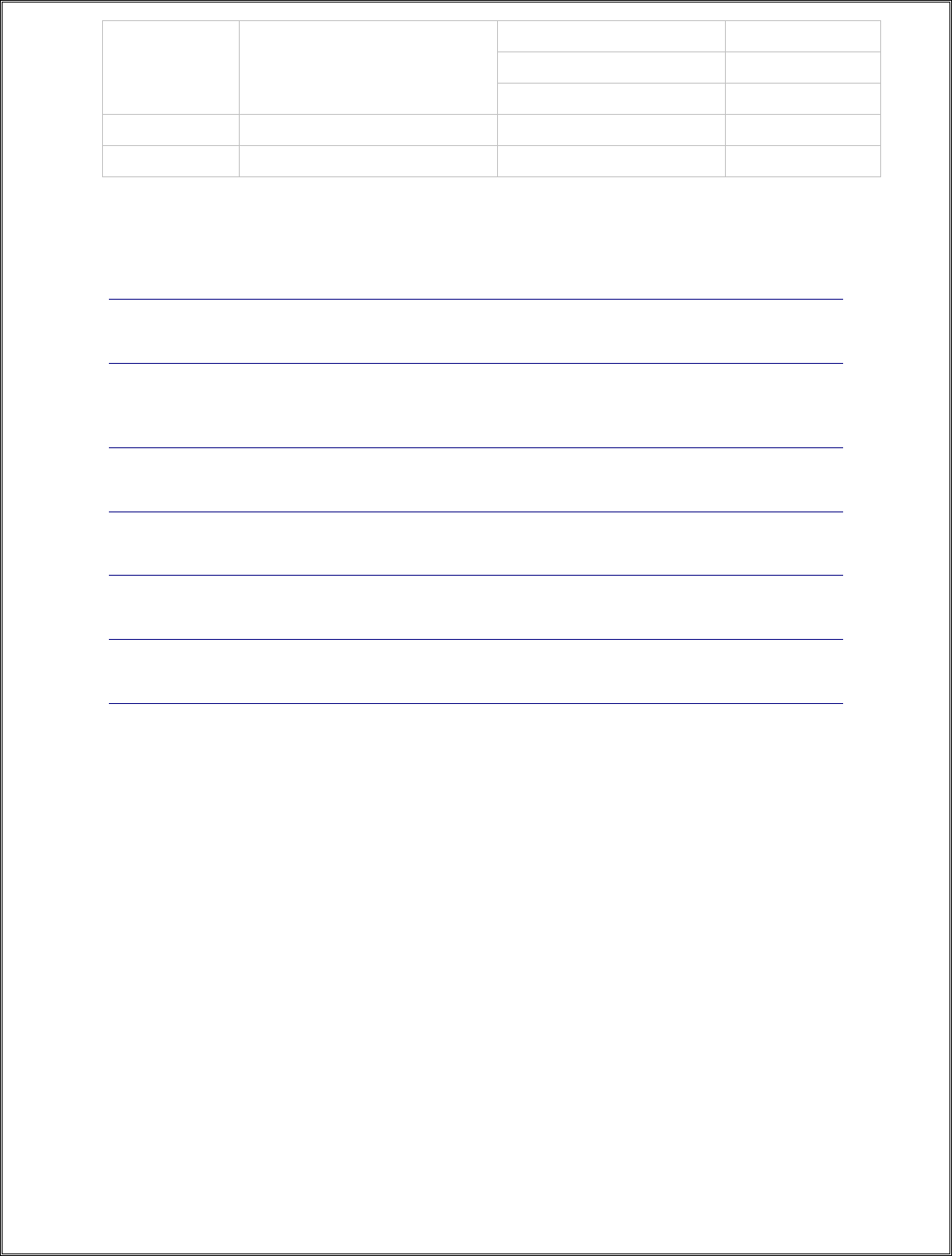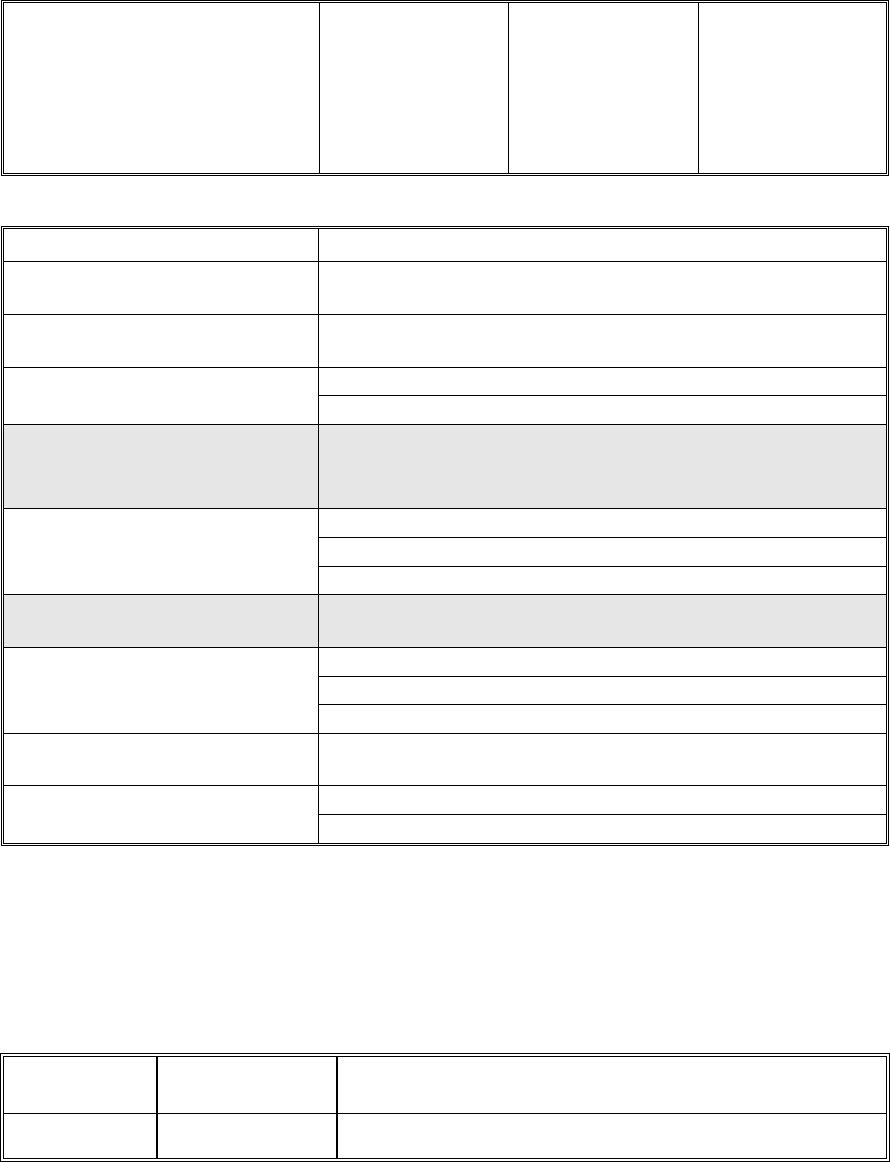
Standard Operang Procedures are a collaborave team eort
and anyone on the team can write (or help write) one. In some
cases, a research manager or senior coordinator may write SOPs
for the department. In other cases, a coordinator or research as-
sistant may write SOPs for their specic responsibilies, and then
the team collecvely edits them into a unied set of documents.
No maer how they get wrien, the process of creang SOPs can
serve as a tool to anchor site qualicaon conversaons, on-
boarding, and problem troubleshoong.
Writing Standard Operating Procedures
Getting Started
If you are a new sta member, it is possible that your
department may not have many SOPs wrien out. This
could be for a variety of reasons. Some teams may avoid
draing SOPs because they feel unnecessarily formal or
prescripve. While SOPs need to be specic and reecve
of workow processes, they do not need to read like a le-
gal contract. Another reason why some avoid SOPs is be-
cause they feel they don’t have me to write them. This is
especially true in smaller departments and in cases where
one sta member handles a task from beginning-to-end.
Talk to your manager or PI about what documents they
have available to help you as you start performing your
research responsibilies. It may be helpful for you to
write SOPs as you onboard since you are coming in from
an outside perspecve.
One way to start draing SOPs is to write out the steps
of a given task as if you were personally explaining it to a
friend, and then ask a colleague if it is clear to them. Aer
that, you can add the more formal documentaon lan-
guage further outlined in the subsequent secons.
SOP Drafting Tips
1) Start small with draing a straight-forward
process and focus on a long-term draing/im-
plementaon plan (e.g., 1-2 per week).
2) Delegate SOP draing responsibilies to
everyone on your team. Provide a template
& completed example, so they can see the
appropriate format.
3) Align SOP draing with a me-based goal
like a site iniaon visit or onboarding a new
sta member.
4) Do what is most useful and urgent rst, like
a process with mulple stakeholders where
everyone needs to be on the same page.
5) Don’t reinvent the wheel. Someone on your
sta likely has emails, to-do lists, or a working
document that can be translated into a SOP.
Scope & Purpose
The bulk of your SOP will be specic step-by-step procedures; however, it is important to provide some context by
including a descripon of the scope and purpose of the SOP. For example, if you are wring an SOP on how to ob-
tain informed consent, your scope and purpose may sound something like this:
The purpose of this SOP is to ensure that the Principal Invesgator (PI) and all research team members assist-
ing in the conduct of clinical research are informed about their obligaons and responsibilies as they pertain
to Good Clinical Pracce (GCP), the invesgaonal plan, applicable regulaons, guidance, and instuonal
policies. This SOP will apply to all clinical trials research within [Instuon name(s)]. This SOP covers the pro-
cesses and procedures that must occur during the informed consent process, which begins with recruitment
and extends through the end of the study, and includes the process of obtaining a signed and dated informed
consent form.

The Basics
While these are primarily internal tools, your SOP may be handed o to a sponsor, monitor, inspector, etc. Be sure
to use consistent font and formang just as you would in other formal documents that have mulple stakeholders.
Design or choose a template that ts the needs of your team. Some template examples can be found in this guide.
The NU IRB website provides NU-wide SOPs. Be sure your SOP template includes:
◆ SOP tle, scope, purpose, and relevant department(s).
◆ Date of inial approval, eecve date, and version number (or date). SOPs are a living document that will
evolve with me.
◆ If your department requires SOPs to be reviewed/approved by a parcular individual, include an area for their
name, approval date, and possibly their signature/inials.
◆ Keep SOPs together on your shared drive saved as a PDF. Use shortcuts to redirect from other areas of your
shared drive as opposed to saving the document in mulple areas. This prevents sta from using out-of-date
versions.
◆ Use an intuive le name along with the version date like “SOP – Research Subject Front Desk Check-In (Dec
2021)”. Do not use terms like “updated” or “approved” in le names as there will be future updates and the date
in the le name serves this purpose.
If your SOP involves mulple departments (e.g., lab samples, imaging, etc.), check with the other department(s) on
a template or format before draing. Ask if they already have a similar SOP with another department that can be
edited to serve your needs.
Language & Usability
The language used in a SOP should be able to be understood by all levels of employees, regardless of whether they
are new to research or have been at your site for years. Remember, the purpose of a SOP is to ensure consistent
outcomes regardless of who is performing the task. Ensure you are wring your SOPs in a way that clearly denes
who (or what role) will be performing each task to help your site sta understand where they t into the process.
Although some components of a SOP might feel formal (e.g. approval dates, etc.), the bulk of the document should
be usable and intuive for your sta (and future sta). The following guidelines can help ensure usability:
◆ Use subheadings and text formang (bold, italics, etc.) in a thoughul way to highlight important content.
◆ Use bullet points and checkboxes for step-by-step direcons.
◆ Idenfy situaons where mulple outcomes for a task may occur (e.g. an abnormal test result during a
follow-up visit) and outline steps for each potenal outcome. Inserng a table can help.
◆ Consider adding a ow-chart or graphic to help visualize processes. You can use PowerPoint or Word’s
SmartArt tool to create a custom graphic.
◆ Leverage the talent on your team: Think about sta members who write eecve emails or have produced
strong documents/presentaons and ask for their help in the SOP wring/eding process.
◆ Ask for feedback from your team before nalizing a SOP. Sta members may interpret things dierently or pro-
vide areas for improvement in either the document or the process itself.
◆ Study specic SOPs can be led as an addendum to a department-wide SOP or led separately.
◆ Think about past miscommunicaons or ineciencies and write the SOP to proacvely address similar mis-
takes from happening. Idenfy your colleagues who are strong communicators and implement some of their
habits (e.g., “I appreciate it when Raul puts the study name and subject number in the email subject line, so I
think we should make that a pracce for everyone to do.”)
SOP Tables, Graphics, & Templates
On the subsequent pages, you will nd examples of graphics embedded into a SOP to ensure usability along with
some document templates.
Maintaining SOPs
SOPs are living documents that evolve over me. They are not a stac regulatory document and should be wrien/
formaed in a way that is useable for everyone on your team. If a SOP is draed to complete a regulatory or SIV
request and not used regularly, it runs the risk of quickly becoming out-of-date which can present problems during
monitoring visits, inspecons, or audits.
In addion to creang SOPs, create a plan to review/update them at least once a year. Some nd it helpful to have
this review period aligned with an exisng milestone that aects everyone in the department (e.g., Nov/Dec before
the holidays, Apr/Jun before grant submission deadlines, etc.).

Ideas for Embedded SOP Graphics
This embedded table outlines actions based on multiple outcomes. Note the use of shading and bolded text to draw the eye to
critical content. You can also use tables to outline responsibilities for different individuals on the same task.
If all test results are within normal limits:
If there are any abnormal test results:
CRC continues on to Step X
CRC completes the items outlined in Step X
AND:
CRC sends an urgent EMR note to the PI with the attached lab
report immediately upon receipt of the results. Include that the
name of the study and subject number in the body of the email. If
the PI does not read or acknowledge the notification within 24
hours, CRC is to contact the practice manager via email.
This graphic supplements SOP text to help staff members visualize the steps of a process and break them down into associated
action-items. Explore Microsoft’s SmartArt to find a template that meets the needs of the process you’re trying to visualize.
- Templates continue on the next page -
Imaging
Completed
• CRC sends imaging report to PI via EMR note. Attach source doc interpretation form
along with subject name/number to the email.
• Imaging report + CD gets printed by CRC and filed in subject binder.
Shipment
• A duplicate CD copy is shipped to the Imaging Core Lab by CRC. See protocol for
shipping information.
• CRC enters tracking information from shipment into EDC.
• CRC enters duplicate copy of tracking information into eRegulatory Binder.
Data Entry
• Once signed imaging interpretation form is received from PI, the CRC enters data
gets into the EDC within 24 hours.
• CRC files original interpretation form in subject binder.

LOGO
Xxxxxx Department
Xxxxxx Division/Function
SOP #
Revision #
Implementation Date
Page #
1 of xx
Last Reviewed/Update Date
SOP Owner
Approval
Documents: SOP short-form
Standard Operating Procedure
1. Purpose
2. Scope
3. Prerequisites
4. Responsibilities
5. Procedure
6. References
7. Definitions

Standard Operating Procedure Template Bizmanualz.com
[ID] [Procedure Name] [Revision] page 1 of 3
Document #
[ID]
Title:
[Procedure Name]
Print Date:
[Date]
Revision #
1.0
Prepared By:
[Author’s Name]
Date Prepared:
[Date]
Effective Date:
[Date]
Reviewed By:
[Reviewer’s Name]
Date Reviewed:
[Date]
Standard:
[Standard, Law,
or Regulation]
Approved By:
[Approver’s Name]
Date Approved:
[Date]
Policy:
Purpose:
Scope:
Responsibilities:
Definitions:
Procedure:
1.0 [FIRST PREPARATORY ACTIVITY - PLAN]
2.0 [SECOND ACTIVITY - DO]
3.0 [THIRD ACTIVITY – CHECK]
4.0 [FOURTH ACTIVITY – ACT]
5.0 [USE MORE ACTIVITIES AS NEEDED]
Effectiveness Criteria:
References:
A. [STANDARD, LAW OR REGULATION]
B. [OTHER PROCEDURES, DOCUMENTS, ETC]
Forms/Records:
Form # Record/Form/Activity Name
Satisfies
Clause
Required by Standard
XXXXX Record
Other Forms/Records

Standard Operating Procedure Template Bizmanualz.com
[ID] [Procedure Name] [Revision] page 2 of 3
Form # Record/Form/Activity Name
Satisfies
Clause
XXXXX Record
XXXXX Record
XXXXX Record
Process Map:

Standard Operating Procedure Template Bizmanualz.com
[ID] [Procedure Name] [Revision] page 3 of 3
Revision History:
Revision
Date Description of changes Requested By
0.0 [Date] Initial Release

Standard Operating Procedure Confidential
TITLE:
SOP
NUMBER:
EFFECTIVE
DATE:
PAGE 1 of 2
Standard Operating
Procedures
SOP-0102.02
APPROVAL BLOCK
1. PURPOSE
2. SCOPE
3. REPONSIBILITIES
4. REFERENCES
5. BUSINESS REQUIREMENTS
6. PROCEDURE
Responsible Party Action Step
Creation and Routing of an SOP and/or Working
Instruction
1.
2.
3.
4.
APPROVALS TITLE SIGNATURE/DATE
Prepared By:
Reviewed By:
Approved By:

Standard Operating Procedure Confidential
TITLE:
SOP
NUMBER:
EFFECTIVE
DATE:
PAGE 2 of 2
Standard Operating
Procedures
SOP-0102.02
Responsible Party Action Step
5.
6.
7.
8.
Revising and Routing of an SOP and/or
Working Instruction
9.
10.
11.
Approving an SOP and/or Working Instruction
12.
13.
14.
15.
16.
17.
7. DEFINITIONS/ACRONYMS
8. FORMS
VERSION HISTORY
VERSION
EFFECTIVE
DATE
DESCRIPTION OF CHANGE
